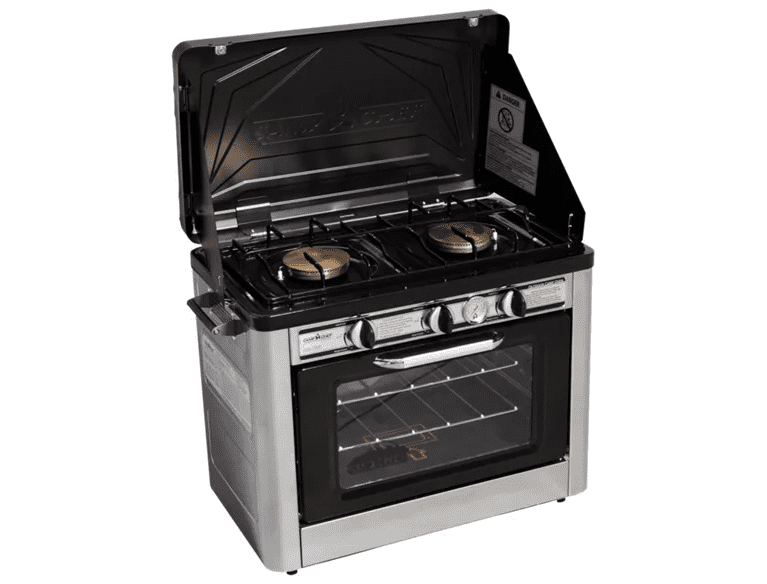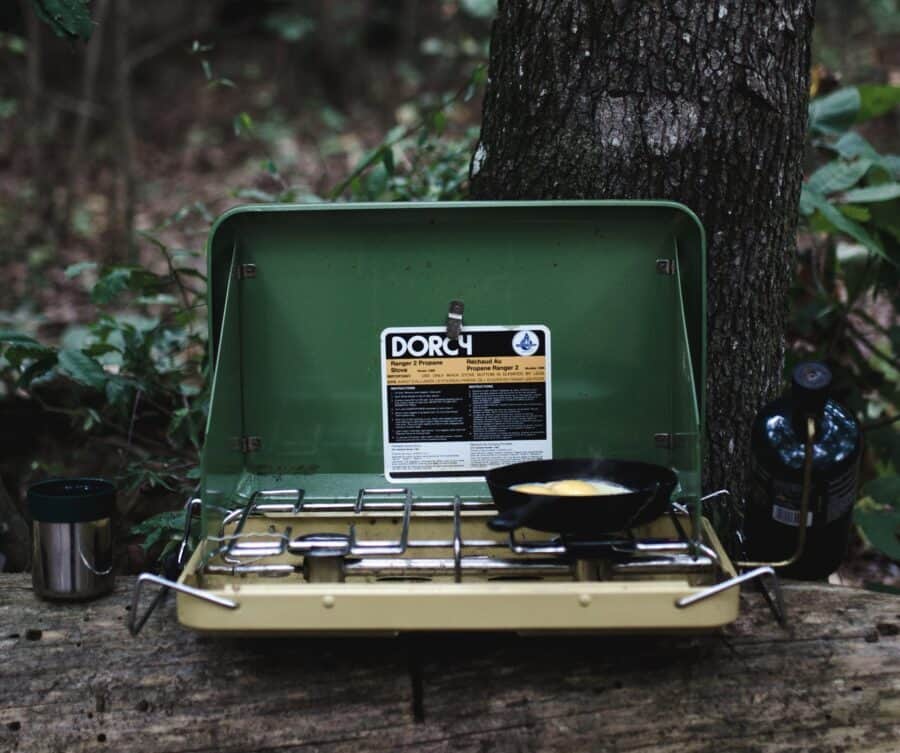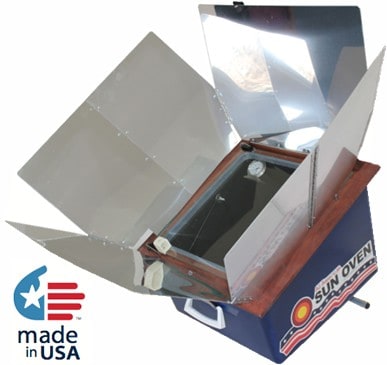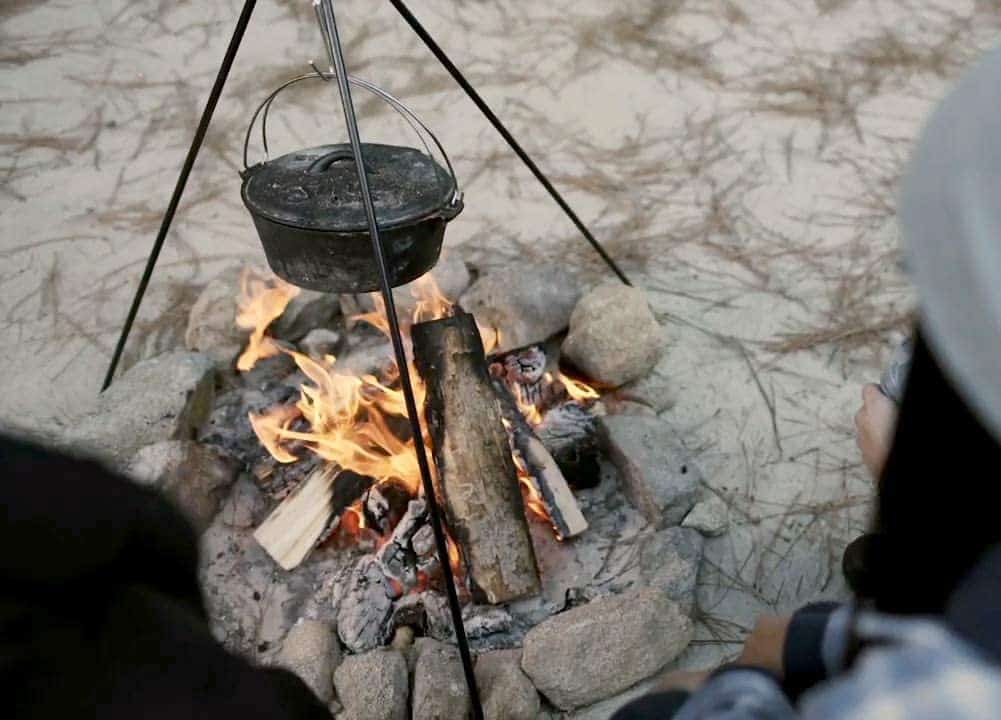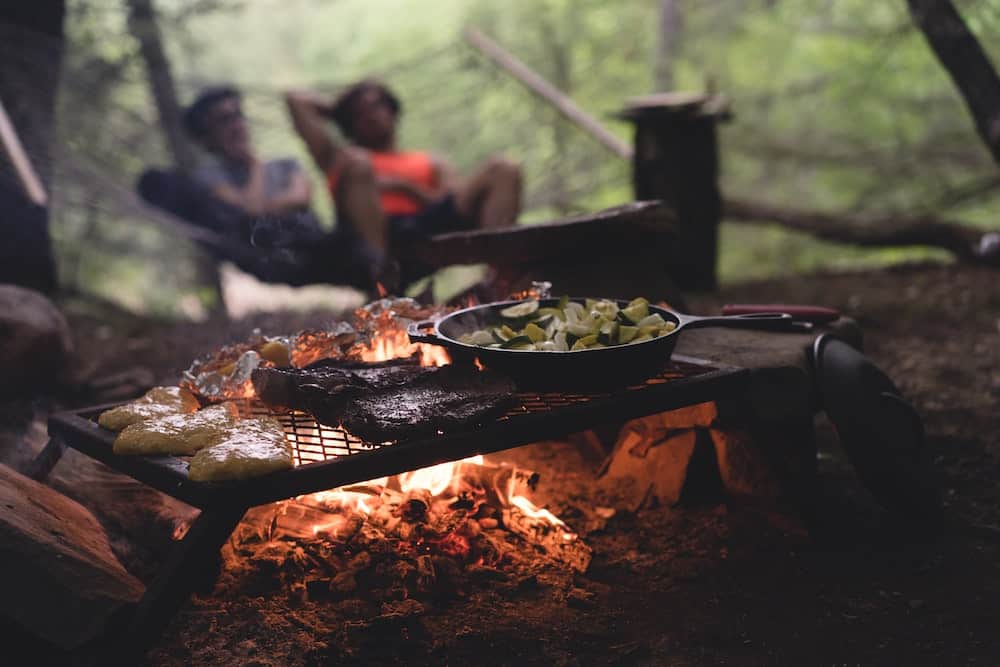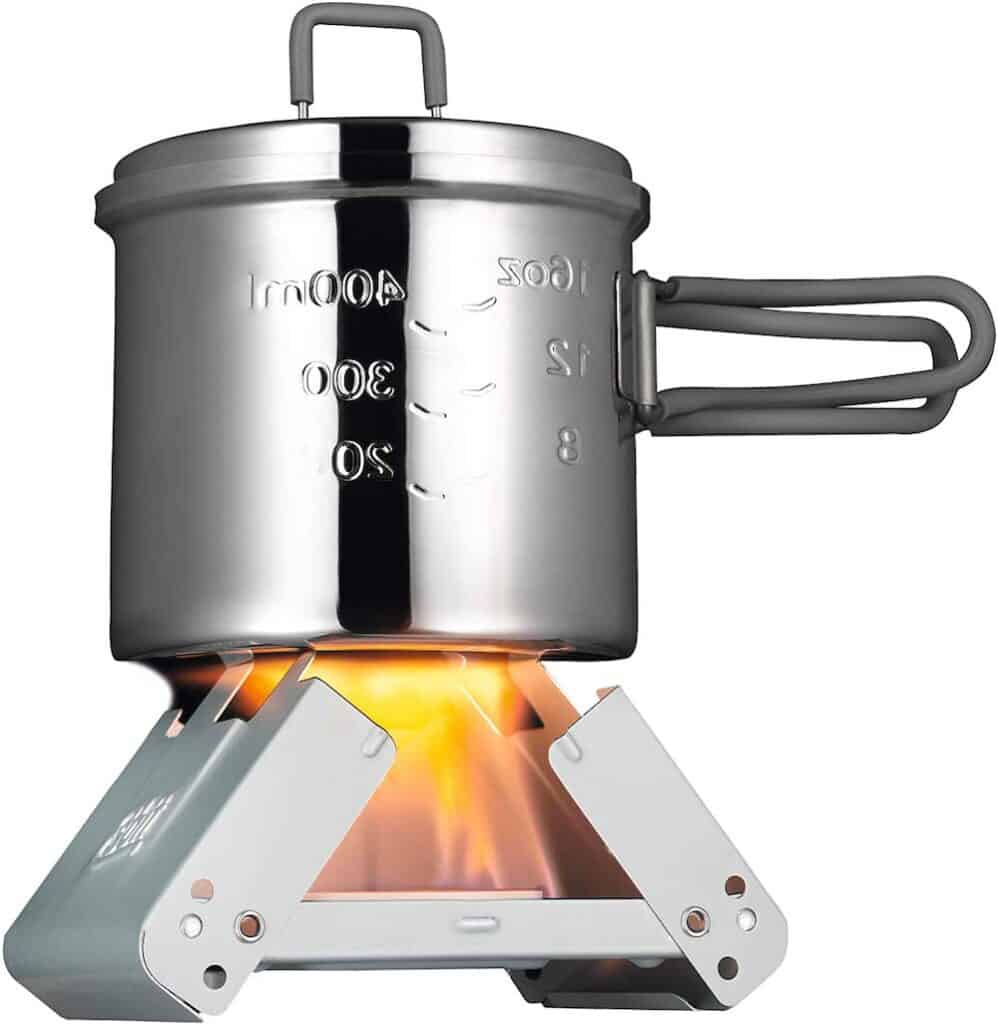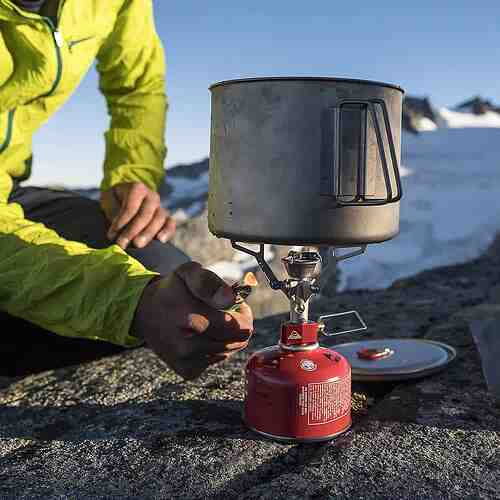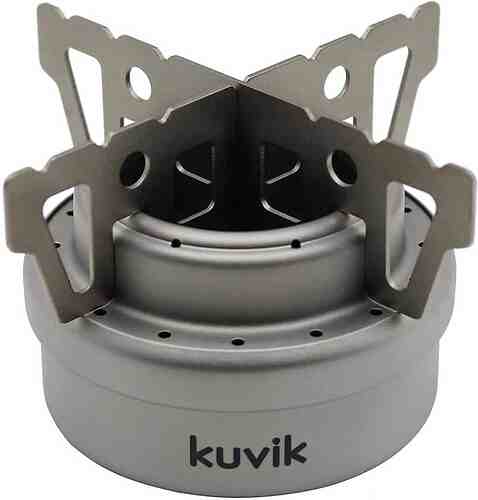Recently, I discussed preparations for major infrastructure failures. Cooking our meals is one of the key elements of our daily lives that requires functioning electric or gas systems. Too be properly prepared for grid down situations, it is essential to have backup cooking methods available for your family in a short or long-term emergency.
It’s also important to know how and where you can safely use some cooking methods. During the 2021 Texas deep freeze, we saw the tragic results of people cooking with a propane grill indoors. Carbon Monoxide is a silent yet deadly killer.
Some methods are more practical for single people and couples, while others work better for families and group situations. Having multiple backup methods for different situations is a wise move. For example, in your car, get home bag or bug-out out bag, you might want a fuel tab or small white gas stove, whereas, at home, you need something that can reliably provide hot meals for three or more people.
Wood Stove
During the year’s colder months, you can heat canned soups and stews easily on a very basic wood stove. If you have some patience and don’t mind getting dinner started early in the day, you can use a pot and make a soup or stew that is ready to feed a crowd. This is a good use of the heat you are producing and the fuel you are burning. We like to use a smaller cast iron dutch oven without feet to make our winter soups and stews.
Camp Chef Propane Outdoor Oven
I am a big fan of Camp Chef products. My husband and I use Camp Chef products a lot over the years. The outdoor oven offers a lot of space for cooking large meals. The oven itself holds a 13"x9" casserole pan. I do want to point out that you have to use a very plain pan to fit that size in the oven. For example, my ceramic 13"x9" lasagna pan will not fit because the handles are too large. The pizza oven is great for baking bread too.
The top stove eyes provide space for two 10-inch skillets or a couple of soup pots.
Matt and I were given one of these ovens in exchange for an honest review. Over the course of summer and fall, his parents used it for all their cooking needs while their house was being remodeled.
Although the oven comes set up for 1 lb. propane canisters, you can get an adaptor that allows you to use 20 lb. propane grill tanks.
Camp Chef Camp Stove System
We have a two-propane burner Camp Chef stove and some accessories. After you purchase a stove, you can buy a one or two burner griddle or grill box. There is a pizza oven accessory too. We have the one burner griddle, one burner grill box, and a large two-burner artisan pizza oven. This system allows us to cook a lot of different foods. We use the Camp Chef a lot during the summer because it keeps the heat from cooking outside.
This system is only suitable for outdoor use, but it is great if you need to cook for a crowd or if you need an outdoor stove to make a one-pot meal.
Note: Camp Chef products are often less expensive on retail sites like Amazon than by shopping directly on their website. Other outdoor product suppliers may have similar low prices, so it pays to look around a bit.
Solar Oven
There are many different styles and sizes of solar ovens available. The classic Sun Oven doubles as a food dehydrator. This is the solar oven that many of you have seen in homesteading and small farm magazines for decades.
There are tube-style solar oven cookers that cost substantially less than the Classic Sun Oven for those that want something smaller.
Cook times for solar ovens vary a lot. I was surprised to learn that even if you are experiencing some cloudiness, you may still be able to cook a meal with a solar oven, but it takes longer.
Tripod and Cast-Iron Pot
When my husband and I were working on building our small house, we did a lot of cooking outside. Purchasing a large cast iron Dutch oven and a heavy-duty iron tripod was a good investment. Although we had a small gas range and oven in the camper, cooking outside made a lot more sense sometimes because it would get so hot in the camper with no air conditioning. Using a wood fire to cook allowed us to make use of wood we picked up around the property that would have just laid on the ground and rotted or possibly just burned up fast when we were trying to get our land cleared and some areas fenced.
Wood Coal Cooking
A good wood fire burned down to “coals” can be used to cook foods wrapped up in aluminum foil or even clay. When my husband was a kid, his mother waited until the campfire was down to coals, and then she would toss whole potatoes wrapped in several layers of aluminum foil onto the fire. The next morning the potatoes were cooked and ready to be made into hash browns or home fries.
Native Americans used to wrap fish in clay and toss that into fires. After the fish was cooked, you just cracked open the clay shell and ate the fish.
Three Rock Fire
When Matt and I were in college, we used to backpack a bit. There were many times where we just used a few rocks to support a pot over a small fire. Although it takes some time to get a good fire and coals going, it is a cooking method that requires a pot to cook in and a way to light a fire. Of course, if you are in an area where there is not much to burn, it would not be easy.
Grills
Propane or charcoal grills can work well if you have enough fuel on hand. Just remember to use your grill outside. We have neighbors that were without electricity for a week last winter, and they survived just fine by bundling up in layers and cooking meals outside.
Sometimes a simple metal grill by itself is perfect for cooking over a fire. No cans of fuel required.
Sterno or Fuel Tablet Stoves
There are quality fuel tab stoves that are lightweight and easy to store. The downside is that fuel tabs have to be ordered or stockpiled, and you can only do that so much. You could utilize a smaller can of Sterno fuel if you don’t have the fuel tablets. This backup method is suitable for 1-2 people who don’t mind many one-pot-style meals or those that usually stick to convenience foods that need to be heated during short emergencies.
The Esbit is a decent addition for a get-home bag or those that want a bug-out bag designed to get them to another location where there are further supplies.
White Gas Stoves
MSR makes some excellent lightweight white gas stoves for camping and backpacking. These are designed for use by 1-2 people. Although you have to keep fuel on hand, you can cook a lot of meals with a single 8 or 16 oz canister of white gas.
If you’re not familiar with he term “white gas” it is a mix of kerosene, gasoline, canister and white gas fuel. A good name-brand white gas stove will last and last. Typically, what starts to go bad in the stove is the seals. You can purchase kits to refurbish an older stove and get it running like new again.
Over the last decade, I have seen many off-brand white gas stoves come on the market. I would not trust a cheap stove for use during an emergency.
Alcohol Stove
An alcohol stove typically runs on 91% rubbing alcohol. They are inexpensive, and the fuel is typically easy to find. During the COVID-19 pandemic, this was not the case. It was practically impossible to find any rubbing alcohol.
Of course, any other high percentage clear alcohol will also work as fuel for this stove. You could produce your alcohol for a stove during a long emergency. At the moment, it is illegal, of course, unless you at least have an ethanol permit.
MRE Heaters or Chemical Heaters
I have personally never been impressed by the heaters supplied with MREs.
They are designed to take the cold edge off of meals, not making them as piping hot as a lot of people are accustomed to when setting down for a meal. If your emergency food plan involves MREs, they can be nice to have, but I cannot see using them otherwise.
Perhaps there is a brand out there that is more impressive? If any of the PP tribe know of any, please share in the comments below.
Store adequate supplies of fuel for alternative cooking
At the moment, massive transportation issues leading to items not getting to retail outlets fast enough to meet demand. It seems like you never know what will be impacted, so plan ahead. Sometimes overwhelming demand is a factor too.
Propane grill tanks, for example, were in short supply in my area over the winter due to so many restaurants using them in patio heaters for outdoor diners. Larger tanks were available at home improvement stores, but you had to take them to a propane dealer to get them filled and be able to deal with moving around a lot of weight.
During emergencies, even well-stocked stores can run low on smaller 1 lb. propane cylinders or Sterno fuel. At the bare minimum, try to have enough fuel on hand to cook all your meals for two weeks if possible. This will also help you avoid the danger and hassle of trying to get supplies when crowds are jostling over what remains on the shelf.
Dish soap, sponges, and wash rags save lives
Germs and infections kill more people during long emergencies than anything else. We make a habit of keeping a lot of dish soap on hand.
Big packs of non-scratch washing sponges are inexpensive, and they can be easily sanitized with vinegar, oxygen cleaner, or bleach.
The items necessary for good hygiene and household cleaning can be hard to find during longer events. It is hard to forget how empty the cleaning product aisles were during COVID-19.
Stock up on paper plates, bowls, and utensils
While I know you can only store so many disposable items, I also know that even just a 300-pack of paper plates can save a lot of hassle during a natural disaster or emergency.
I have washed a lot of dishes without indoor plumbing and hot running water. It is not pleasant, and I did it for years. If I wanted hot water, I had to heat it on a stove or outside in a barrel with fire around it.
If you have to make do with your backup cooking method during an emergency and cook for a family of four, you will be thankful to have some disposable items on hand.
Practice with your cooking gear before an emergency
If you can avoid using something for the first time during an emergency, it is often for the best. You don’t want to get your cooking equipment set up only to realize it is damaged, you are missing something, or that you are stressed and moving a little slow.
Keep meals simple
Simple yet delicious meals are the key to making the most out of your backup cooking methods.
One-pot meals that feed the whole family are always good, and they reduce the number of dishes used for food preparation.
- Soup
- Chili
- Stews
- Roasts with Vegetables
- Casseroles
- Meat
- Beans
- Tomatoes
- Stews
- Mixed Vegetables
- Pasta
- Dried Cheese Powder
- Dried Milk or Yogurt
- Spices
- Beans (Since beans take forever to cook when preparing from a dried state, I only recommend them for short emergencies with a heating method that acts as a slow cooker.)
- Rice
- Beverage mixes
This is a companion discussion topic for the original entry at https://peakprosperity.com/alternative-and-backup-cooking-methods/
